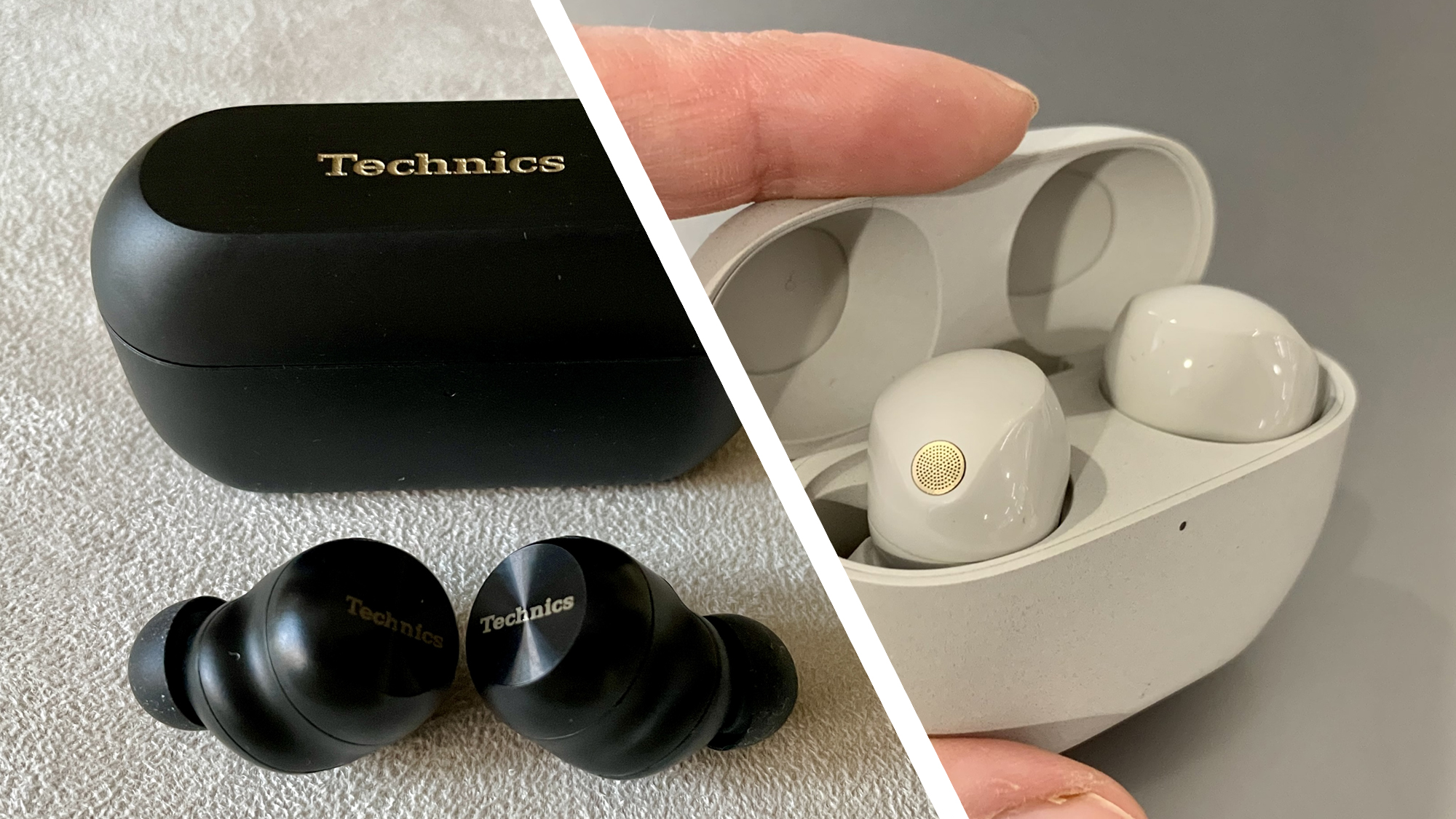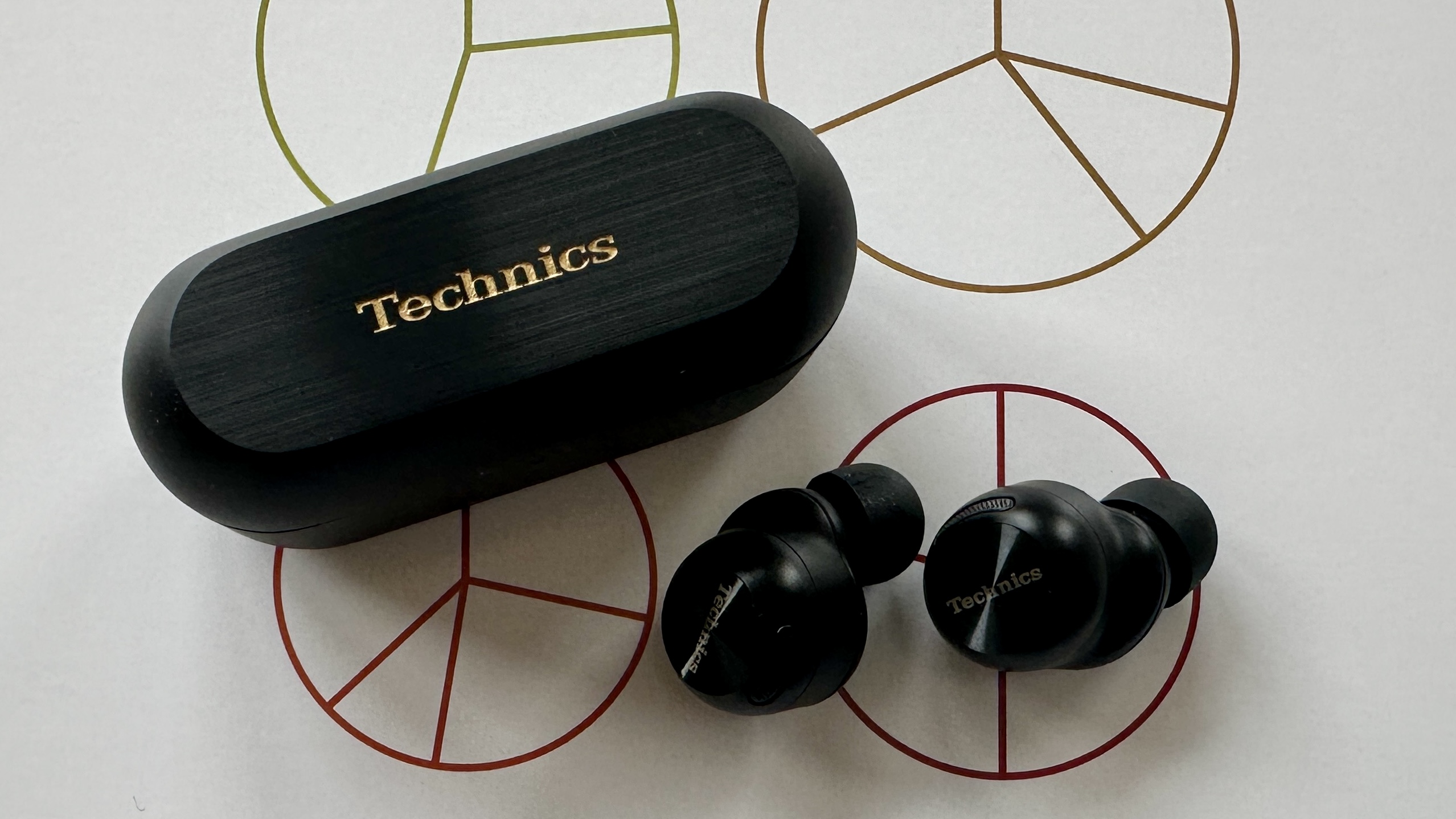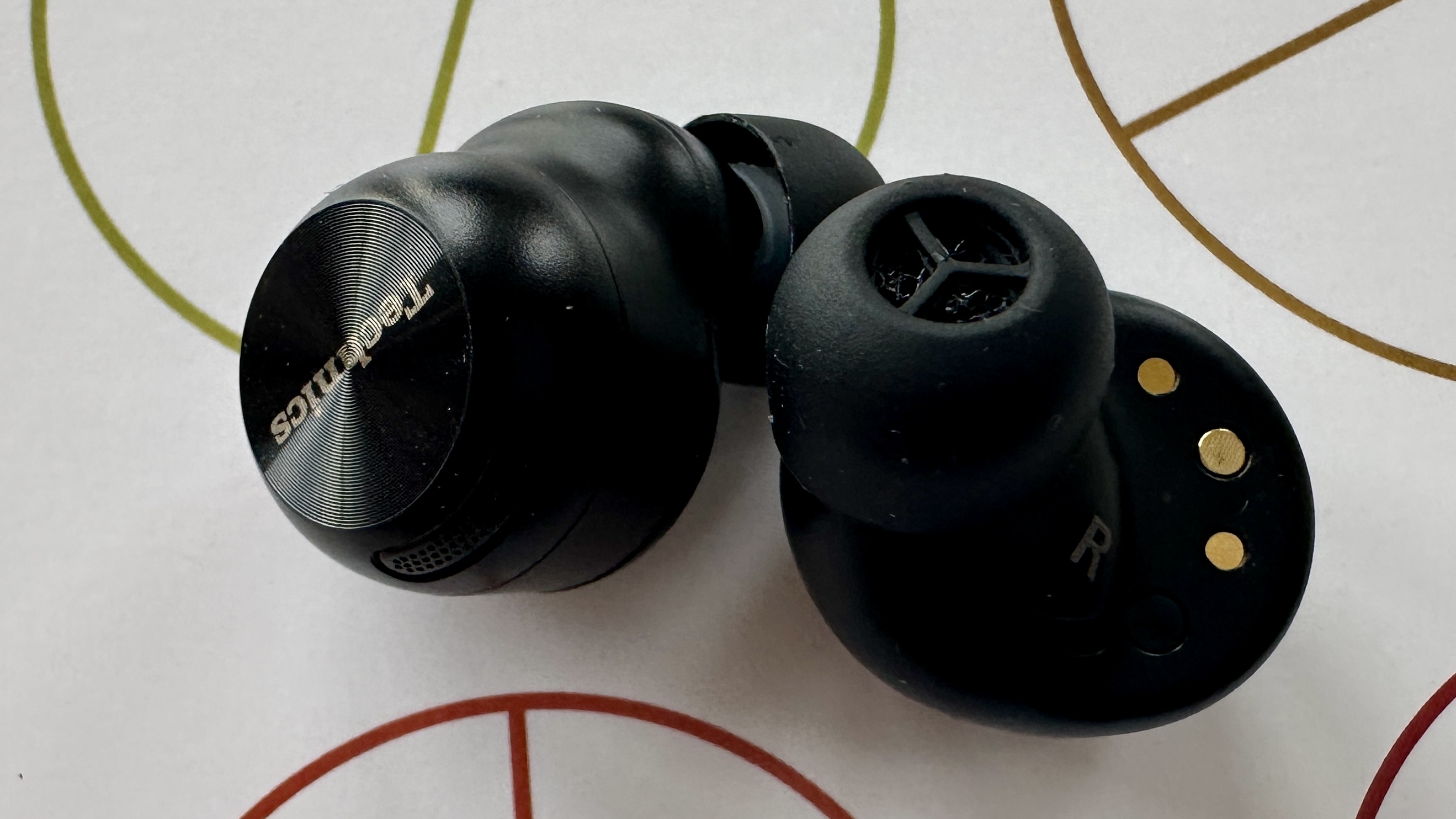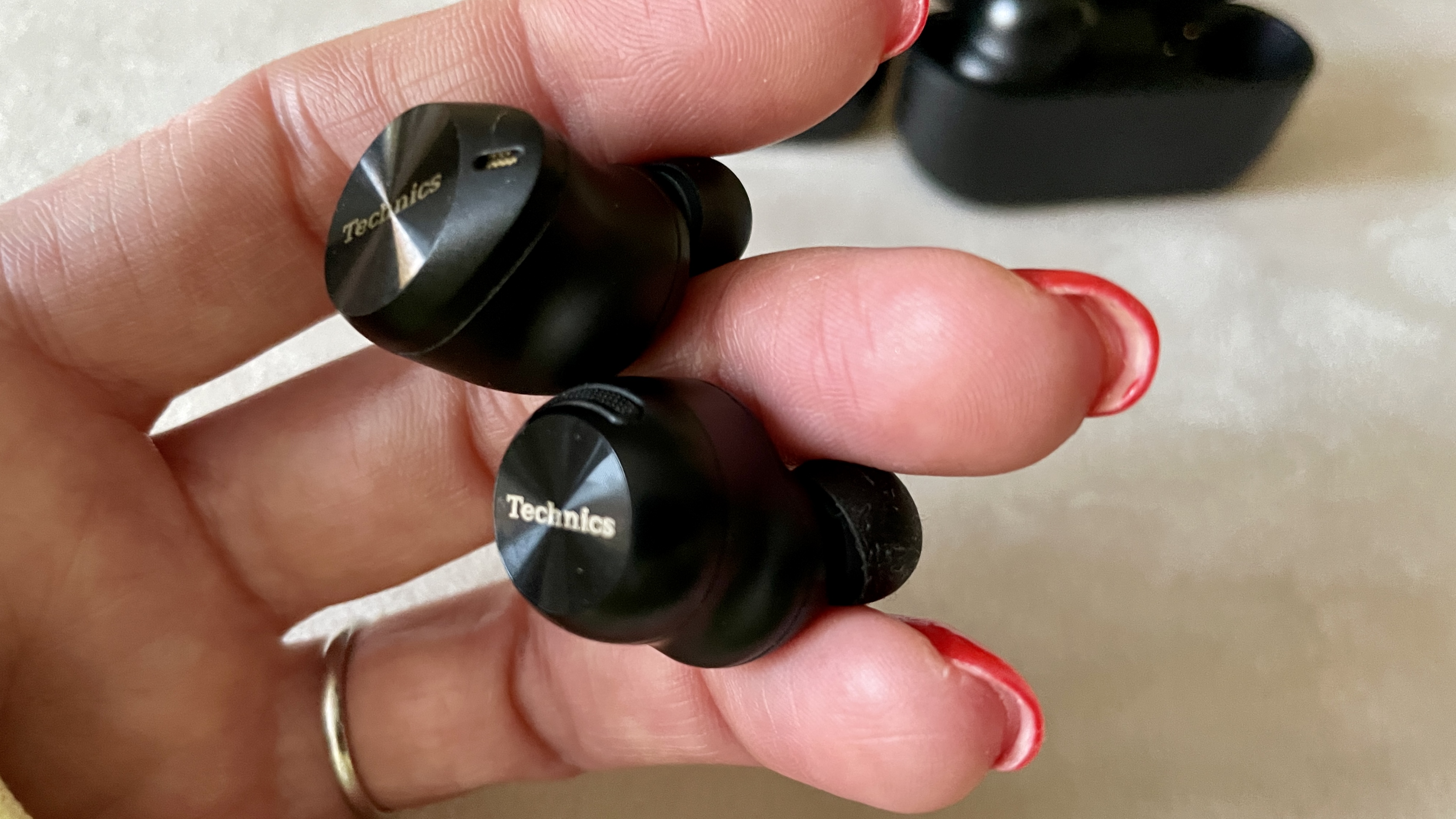I tested Technics' EAH-AZ100 against Sony's WF-1000XM5, and here's how the elite wireless earbuds compare
Technics' new high-tech hotness versus Sony's flagship earbuds

Up until very recently, Sony had carved itself a very agreeable little niche or two in the world of the best wireless earbuds: those of ‘best all-rounders’ and ‘best Android-compatible earbuds’ in particular. Numerous rival brands had attempted to break the Sony hegemony, but the best anyone could manage was ‘nice try, but not quite…’
Technics was one of those ‘nearly’ brands, except that its recent buds have finally fulfilled the promise of beat Sony at its own game, and the new Technics EAH-AZ100 drive that home. Smaller, lighter and more comfortable than the EAH-AZ80 model they replaced, with a look, a feel and a feature-set that more than justifies the premium asking price, the EAH-AZ100 are the strongest competition for the pushing the Sony WF-1000XM5 out as the obvious all-round pick.
I've spent a lot of time with both the Technics EACH-AZ100 and the Sony WF-1000XM5, so I can fully compare the long-established market leaders and the very best of the challengers, so here's how they stack up.
Technics EAH-AZ100 vs Sony WF-1000XM5: Price and release date

The Technics EAH-AZ100 were announced in January 2025, and went on sale that same month. Obviously they haven’t had much chance to enjoy a price cut as yet, so you should expect to pay the full $299 in the United States, £259 in the UK, and AU$499 in Australia.
By way of contrast, the Sony WF-1000XM5 have hung in there for a couple of years – they launched in late July 2023, and so are approaching their second anniversary. This longevity indicates just how right Sony got it with this model – and it also means that the WF-1000XM5 have become a fair bit more affordable too. When they launched, the asking price was £259 / $299 / AU$499. Looks familiar, doesn’t it? These days, of course, you don’t have to look all that hard to find them at more like £199 / $219 / AU$359.
£200 and above still counts as ‘premium’, though – just because the Sony earbuds are relatively long in the tooth, they haven’t stopped being extremely capable and so are priced accordingly. So while there’s a bit of a difference in the asking price between them and the far newer Technics, don’t imagine they’re not both contesting the same area of the true wireless market.
Technics EAH-AZ100 vs Sony WF-1000XM5: Sound quality

I have spent a long time listening to each of these pairs of true wireless in-ear headphones. I’ve spent longer with the Sony, obviously, because my pair is getting on for two years old – but ever since I first came into possession of the Technics EAH-AZ100 I’ve found myself reaching for them more and more often. And while some of that is down to novelty, more of it is to do with the way they feel, and even more is to do with the way they sound.
That’s not to say the Sony WF-1000XM5 are in any way deficient, you understand. Just because a product has hung in there a little longer than you might have expected, that doesn’t mean its performance has gone backwards – on the contrary, it suggests its performance was extremely good to start with. And that’s certainly the case with the XM5 – at every turn, they’re an engrossing and entertaining listen.
As far as the broad strokes of detail retrieval, the overall clarity and unity of sonic presentation are concerned, the Sony are as good as any price-comparable rival you care to mention. And when it comes to simple ‘musicality’ – the confidence of their tonal balance, the positivity of their rhythmic expression, and the sensation of a coherent performance – they remain high among the class-leaders. They communicate eloquently, and are open and well-defined even when playing complex and/or element-heavy recordings.
Perhaps the only area in which they are mildly lacking is in low-frequency presence and substance. The XM5 delve deep into the frequency range, and give bass sounds plenty of variation once they’re there - but they’re not the most robust or forceful listen. Other true wireless earbuds hit harder and with more determination… and the Technics EAH-AZ100 are among them.

When it comes to low-end drive and dynamism, the AZ100 are one of the best pound-for-pound designs around – and this is by no means the limit of their talents. In every meaningful respect – frequency response, tonality, integration, you name it – the Technics make a powerful case for themselves.
They’re a deft and insightful listen, able to extract the most minor, most transient details from a recording and put them into convincing overall context. They’re potent low-frequency performers without losing any control or authority – their bass presence is considerable, but it’s straight-edged and swift too, so as well as a stack of tonal variation they have confident rhythmic ability too.
There’s a coherence and a singularity to the EAH-AZ100 sound that works across pretty much every genre of music you care to mention. If you’re listening to spare, guitar-and-voice stuff then the Technics can sound intimate and immediate, and if you’re listening to an entire symphony orchestra gearing up for the final assault then they’re dynamic’ full-scale and assertive.
The ability to sound positive and direct, and also to sound bombastic and forceful – and to be able to switch between those two states in an instant – is rare in audio products of any type, at any price. Which means the Technics EAH-AZ100 are profoundly accomplished and absolutely demand your attention.
Winner: Technics EAH-AZ100
Technics EAH-AZ100 vs Sony WF-1000XM5: Features

As you might imagine, the Technics EAH-AZ100 and the Sony WF-1000XM5 have quite a lot in common where features are concerned. Both have active noise cancellation, both have fully featured control apps and responsive touch controls, and they have quite similar battery-life numbers too (the Sony earbuds can go for between eight and 12 hours before they need to visit their charging case, depending on how you use them, and the same is true of the Technics).
Both have an IPX4 rating against dust and moisture, and both use Bluetooth 5.3 with LDAC compatibility for wireless connectivity, though Technics support Bluetooth LE Audio and the LC3 codec too. Both include a variation on ‘adaptive’ active noise-cancellation that monitors external sound levels and adjusts ANC accordingly.
Naturally there are differences too, though, both in terms of features and specification. The Technics use a pair of 10mm dynamic drivers to deliver a frequency response of 20Hz-40kHz, while the Sony make do with a couple of 8.4mm drivers to serve up a perfectly adequate 20Hz-20kHz frequency response.
The Sony use three mics per earbud to deal with active noise cancellation, telephony and voice-assistant interaction, and also have a noise-reduction engine along with a bone conductor sensor to detect when you’re speaking.
The Technics also have three mics per side for the same purposes, but up the ante a little with ‘Voice Focus AI’ to help with call quality.
And while the Sony have multipoint connectivity that allows them to be connected to two devices at once to instant switching, the Technics can connect to three at a time – which is ideal for the full-on multitaskers among us. This is borderline unique – only the Technics EAH-AZ80 match this.
Winner: Technics EAH-AZ100
Technics EAH-AZ100 vs Sony WF-1000XM5: Design and comfort

When it launched the WF-1000XM5, Sony made a fairly big noise about how much smaller and lighter they are compared to the model they replaced. And the same is true of Technics – the EAH-AZ80 were among the chunkier earbuds around, but the EAH-AZ100 are altogether trimmer and lighter, and are more comfortable for longer as a result.
The Sony don’t have a moulded stabilization fin like the Technics do – or, at least, it’s nothing like as pronounced – but between the fairly ergonomic design and a choice of four different sizes of eartip in the packaging, it’s simple enough to get a stable and comfortable fit.
Technics, which has long had a bee in its bonnet about the importance of eartips when it comes to an efficient and comfortable fit, provides five different sizes.
The Technics’ 5.9g per earbud (and 42g for the empty charging case) further ups the comfort quotient – there are plenty of bigger, heavier wireless earbuds around. The Sony aren’t among them, though, because they’re also 5.9g per side and their charging case is an even handier 39g.
Both models are available in their manufacturers’ interpretation of ‘black’ or ‘silver’, and both are built and finished to a very high standard. If I was forced to choose, I’d suggest the Technics look and feel a little more premium and upmarket than the Sony, but I quite understand if you disagree.
Winner: Tie
Technics EAH-AZ100 vs Sony WF-1000XM5: Verdict

‘Playing it safe’ isn’t automatically a bad thing. And if you play it safe by choosing to buy what have been class-leading true wireless in-ear headphones for the last two years, then I doubt you’ll be disappointed by the Sony WF-1000XM5 – they sound great, they cancel noise very effectively, their control options are implemented well, they’re comfortable and they look the part.
And yet time waits for no man, and no true wireless in-ear headphones either – and for my money the Sony have finally met their match. The Technics EAH-AZ100 are an across-the-board match for the WF-1000XM5, and add a dose of low-frequency positivity and (to my eyes, at least) a more premium look to make them an even more attractive proposition.
If you’re after the best pound-for-pound true wireless in-ears around, you now have a real choice to make… but I'd take the Technics.
Get daily insight, inspiration and deals in your inbox
Sign up for breaking news, reviews, opinion, top tech deals, and more.
Simon Lucas is a senior editorial professional with deep experience of print/digital publishing and the consumer electronics landscape. Based in Brighton, Simon worked at TechRadar's sister site What HiFi? for a number of years, as both a features editor and a digital editor, before embarking on a career in freelance consultancy, content creation, and journalism for some of the biggest brands and publications in the world.
With enormous expertise in all things home entertainment, Simon reviews everything from turntables to soundbars for TechRadar, and also likes to dip his toes into longform features and buying guides. His bylines include GQ, The Guardian, Hi-Fi+, Metro, The Observer, Pocket Lint, Shortlist, Stuff T3, Tom's Guide, Trusted Reviews, and more.
You must confirm your public display name before commenting
Please logout and then login again, you will then be prompted to enter your display name.
